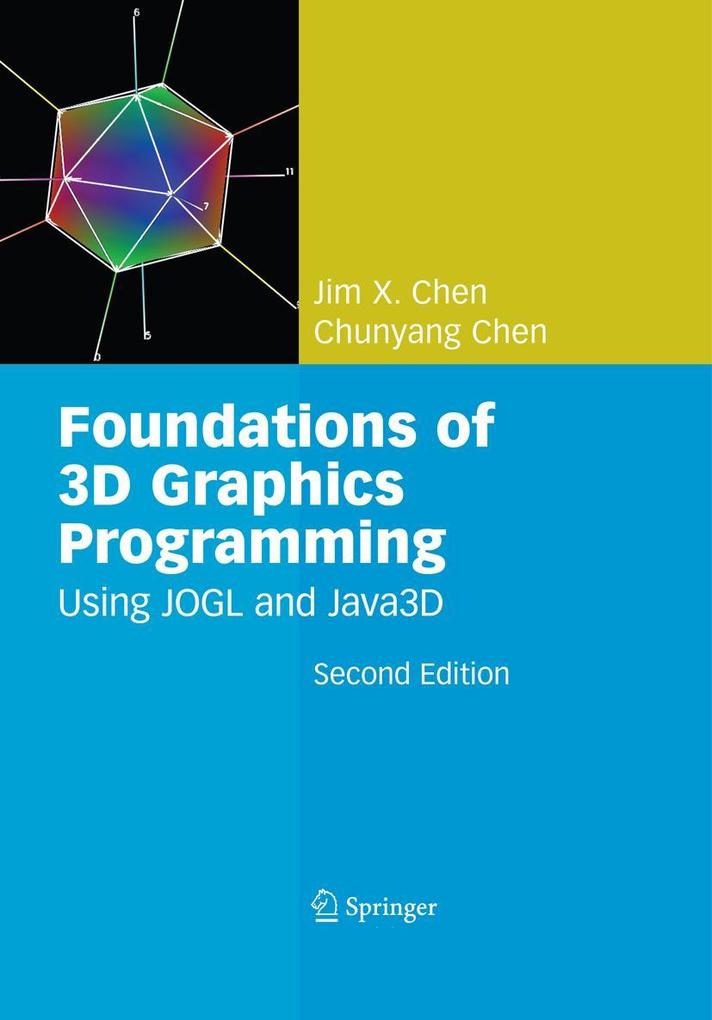
Zustellung: Di, 01.07. - Fr, 04.07.
Versand in 1-2 Wochen
VersandkostenfreiBestellen & in Filiale abholen:
This computer graphics book covers 3D concepts, essential fundamentals theory, and easy-to-follow OpenGL practical programming in Java. This second edition includes three new chapters and has been thoroughly updated and enhanced throughout.
OpenGL, which has been bound in C, is a seasoned graphics library for scientists and engineers. As we know, Java is a rapidly growing language becoming the de facto standard of Computer Science learning and application development platform as many undergraduate computer science programs are adopting Java in place of C/C++. Released by Sun Microsystems in June 2003, the recent OpenGL binding with Java, JOGL, provides students, scientists, and engineers a new venue of graphics learning, research, and applications. Overview This book aims to be a shortcut to graphics theory and programming in JOGL. Specifically, it covers OpenGL programming in Java, using JOGL, along with concise computer graphics theories. It covers all graphics basics and several advanced topics without including some implementation details that are not necessary in graphics applications. It also covers some basic concepts in Java programming for C/C++ programmers. It is designed as a textbook for students who know programming basics already. It is an excellent shortcut to learn 3D graphics for scientists and engineers who understand Java programming. It is also a good reference for C/C++ graphics vi Preface programmers to learn Java and JOGL. This book is a companion to Guide to Graphics Software Tools (Springer-Verlag, New York, ISBN 0-387-95049-4), which covers a smaller graphics area with similar examples in C but has a comprehensive list of graphics software tools. Organization and Features This book concisely introduces graphics theory and programming in Java with JOGL.
Inhaltsverzeichnis
Transformation and Viewing. - Color and Lighting. - Blending and Texture Mapping. - Curved Models. - Vertex Shading, Pixel Shading, and Parallel Processing. - Cg Programming. - Programming in Java3D. - Advanced Topics.
Produktdetails
Erscheinungsdatum
11. September 2008
Sprache
englisch
Auflage
2nd edition 2008
Seitenanzahl
416
Autor/Autorin
Jim X. Chen, Chunyang Chen
Verlag/Hersteller
Produktart
gebunden
Abbildungen
XVI, 386 p.
Gewicht
903 g
Größe (L/B/H)
241/183/28 mm
Sonstiges
w. 101 b&w and 40 col. figs., 28 duotones and 73 drawings.
ISBN
9781848002838
Entdecken Sie mehr
Pressestimmen
From the reviews of the second edition:
"This book is primarily a survey of the basic, traditional computer graphics topics taught in many algorithm-oriented computer graphics courses ... . all of the example code provided in the textbook is written in Java, using OpenGL. ... Since many institutions have moved to the Java programming language, this is a very reasonable choice. ... Overall, I like the textbook ... . chapters of the textbook constitute a typical one-semester introduction to a graphics overview course of 2D and 3D graphics (rendering side)." (J. Miller, ACM Computing Reviews, June, 2009)
"This book is primarily a survey of the basic, traditional computer graphics topics taught in many algorithm-oriented computer graphics courses ... . all of the example code provided in the textbook is written in Java, using OpenGL. ... Since many institutions have moved to the Java programming language, this is a very reasonable choice. ... Overall, I like the textbook ... . chapters of the textbook constitute a typical one-semester introduction to a graphics overview course of 2D and 3D graphics (rendering side)." (J. Miller, ACM Computing Reviews, June, 2009)
Bewertungen
0 Bewertungen
Es wurden noch keine Bewertungen abgegeben. Schreiben Sie die erste Bewertung zu "Foundations of 3D Graphics Programming" und helfen Sie damit anderen bei der Kaufentscheidung.









